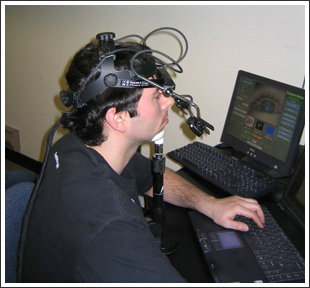|
Our laboratory is interested in understanding how the brain acquires and updates information about its environment to guide appropriate motor actions. We understand a great deal about how the brain uses sensory instructions to guide actions similar to that used to navigate a traffic light; green means go, red means stop. However, for many decisions, such as choosing what bet to place in a game of poker, there are no sensory instructions indicating the correct choice. Under these conditions, the brain must weigh factors such as the statistical strength of one’s hand, the size of the bets, and the opponent’s history of bluffing. |
 |
To study these issues in the laboratory, we measure the most common overt decision - a decision that you make roughly 3 times every second and hundreds of thousands of times every day – choosing where to look. Saccades are rapid eye movements that redirect the high acuity foveae to targets of interest such as occur when reading this text. We are interested in how neural activity in regions of the frontal cortex and midbrain involved in saccade generation are influenced by factors such as the probability of reward, the magnitude of reward, subjective valuation and interactions with a strategic opponent.
 |
Our various lines of research promise to provide a greater understanding of the neural basis of human decision-making in humans. Such a foundation is critical for the development of therapeutic interventions in patient populations who make seemingly irrational decisions such as substance abusers, pathological gamblers and obsessive-compulsives. |